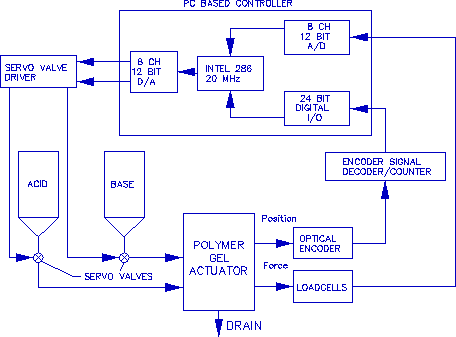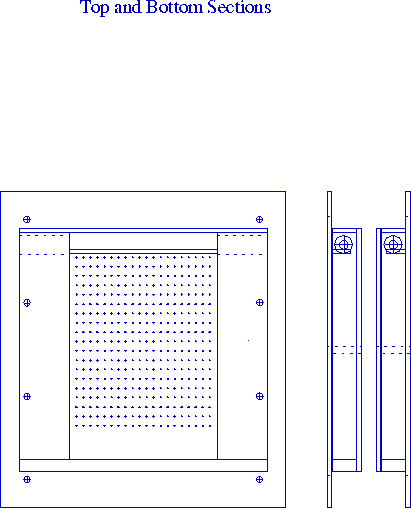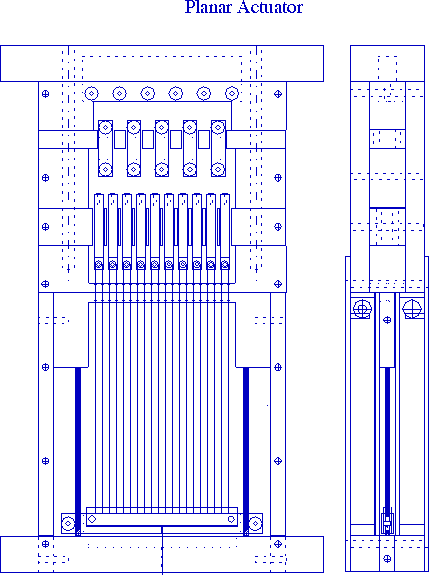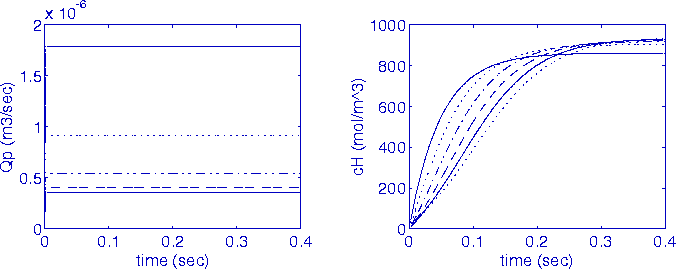Advanced control algorithms
The nonlinear nature of polymer gel, suggests
nonlinear techniques for actuator control. An area of
expertise, in which the Robotics Group in the AI Lab
is particularly adept, is the application of advanced
control theory to robotic systems. We have, in
simulation, successfully applied a nonlinear sliding
mode control system to a gel based actuator. A well
controlled actuator is critically important for any
practical application of polymer gel systems. Therefore,
we propose to fully exploit our ability in advanced
control theory to optimize the performance actuators
which we construct.
D. Deliverables
The proposed project will yield scientific and
technological results. These results will be presented
in journals articles, major conference proceedings,
and ARPA reports. At the end of each year of the
project, a demonstration will be conducted and a
professional quality videotape will be produced.
- (at month 9) Optimized Polymer Gel for Actuation
- (at month 12) Final Design of Polymer Gel Actuator
- (at month 18) Final Dynamics Model
- (at month 24) Final Polymer Gel Actuator
- (at month 30) Final Control System
- (at month 36) Gel Actuated Robot Prototype
E. Technical Plan
E.1 Statement of Work
- (at month 9) Optimized Polymer Gel for Actuation
Macroscopic mechanical/thermal property studies of gel and actuator
- Tensile Testing
- Fatigue Life Testing
- Creep/Stress Relaxation
- Energy Efficiency and Power/Force Density
- (by month 12) Final Design of Polymer Gel Actuator
- Develop actuator design which
- Requires minimal volume of fluid
- is self-contained with minimal leakage
- has optimized irrigation system
- Develop efficient power transmission system
- Optimize geometry: linear, planar, etc.
- (by month 18) Final Dynamics Model
- Develop dynamic model of gel suitable for real-time control
- Develop lumped parameter model of irrigation/power transmission
- (by month 24) Final Polymer Gel Actuator
- (by month 30) Develop unified control system
- (by month 36) Gel Actuated Robot Prototype
- Integrate chemical energy storage and transport systems
- Fully instrument mechanical system
F. Cost Estimate
G. Appendix
G.1 MIT Artificial Intelligence Laboratory
The AI Laboratory has a long history of making
fundamental contributions in the fields of Artificial
Intelligence and Robotics. For more than 20 years the
lab has demonstrated the ability produce innovative
mechanical systems, algorithms and computer
architectures. Currently employing over 20 faculty and
full time research staff, as well as over 100 graduate
students, it provides a vast resource of technical
expertise in computational systems, sensory
interpretation, mechanical devices and realtime control
systems directly relevant to this project's needs.
In addition, the facilities of the Department of
Mechanical Engineering and the Artificial Intelligence
Laboratory shop facilities will be available on an
as-need basis. These include extensive mechanical and
electronic fabrication facilities. At the AI Lab a
large network of Sun Workstations is available and
provide powerful computational resources
G.2 Robotics Group at the MIT AI Lab
Over that past 10 years at MIT and elsewhere, Dr.
Salisbury and his associates have focused on the
development of electromechanical systems utilizing
novel transmission, actuation, and control schemes.
These devices have ranged from joysticks to robotic
hands and arms. The underlying capability emphasized
in all these devices has been the ability to control
and sense contact forces. Mechanical and servo design
techniques have evolved through these experiences that
enable our team to design relatively complex
force-exerting devices with high performance and low
cost. Central to our view of performance are stringent
demands on bandwidth, dynamic range (ratio of maximum
to minimum exertable and sensible forces), and
backdrivablitity. These have resulted in techniques
utilizing stiff, backlash-free, and extremely low
friction transmissions to efficiently couple responsive
electric motors to stiff, low mass mechanisms. To
date, we have employed traditional engineering
materials such as aluminum structures and stranded
steel cable; it is clear that use of higher performance
composite structural materials (carbon fiber) and high
strength synthetic cables (Spectra, Vectran) will
further improve our systems. A complimentary area of
expertise that has evolved within Dr. Salisbury's group
is the ability to design multi-axis force sensors.
Used to monitor and control contact force interactions,
we have found these devices to be a robust and
performance enhancing adjunct to our mechanical
systems.
G.3 Investigators
David Brock is a Research Associate at the MIT
AI Lab and a Postdoctoral Associate at the MIT
Research Laboratory for Electronics. He completed his
Ph.D. at MIT in 1993 on methods for automated robot
grasping and is currently responsible for a
significant portion of the Virtual Environment
Training Technology (VETT) haptics project. In 1991,
with funding from the Sandia National Laboratory and
EXOS Corporation, he formed an Aritificial Muscle
Laboratory within the MIT AI Lab for the research and
development of polymer gel based actuators.
Ken Salisbury is Principal Research Scientist at the
MIT Artificial Intelligence Laboratory. He has been at
MIT since 1982 when he received his Ph.D from Stanford
University. He is well known internationally for the
design of robotic devices and algorithms for force
interaction. He designed the JPL six-axis
force-reflecting hand controller and the Stanford-JPL
three-fingered hand ("Salisbury Hand"), and is
co-inventor of the WAM robot arm, and the MIT
Thimble-Gimbal force feedback device ("PHANToM"). He
holds significant design patents and patents pending
for his work on robotic arms, hands, and force sensing
technology and has served extensively as a consultant
to industry and government laboratories.





